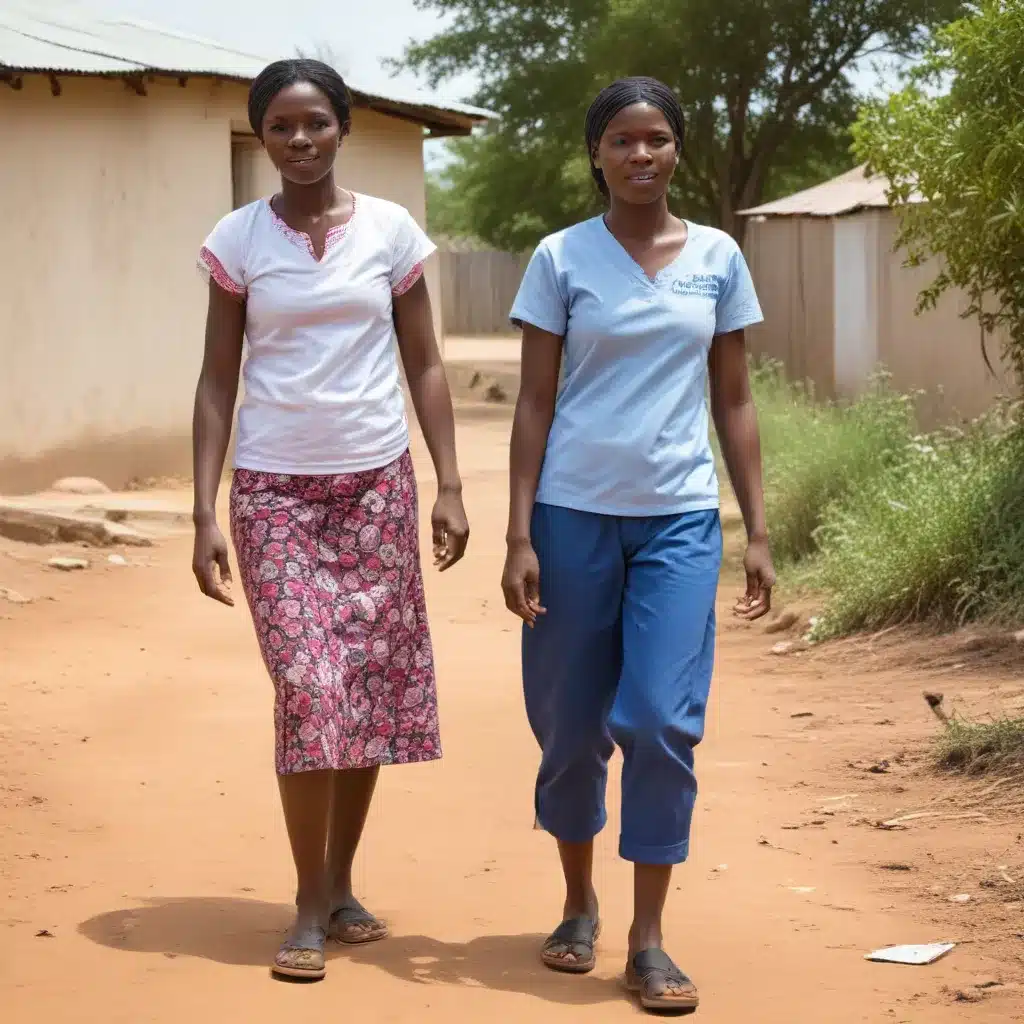
The Growing Need for Rehabilitation Services in Sub-Saharan Africa
The demand for physical rehabilitation services has been steadily increasing in sub-Saharan Africa (SSA) due to various factors, including rising life expectancy, changing lifestyles, and the rising prevalence of non-communicable diseases. Approximately 2.4 billion people worldwide are living with a health condition requiring rehabilitation, and an estimated 50% of these individuals in low- and middle-income countries like those in SSA have unmet rehabilitation needs.
This substantial unmet need for physical rehabilitation is compounded by a critical shortage and uneven distribution of trained healthcare workers specializing in rehabilitation services across the SSA region. To address this challenge and expand access to high-quality rehabilitation services, there is a growing recognition of the potential role that community health workers (CHWs) can play in bridging the gap.
Leveraging Community Health Workers for Physical Rehabilitation
CHWs are frontline public health workers who are trusted members of the communities they serve. They are uniquely positioned to provide culturally appropriate health education, offer social support, connect people to needed services, and in some cases, even deliver basic healthcare interventions. By task-shifting certain rehabilitation responsibilities from skilled healthcare professionals to CHWs, the shortage of qualified rehabilitation personnel in resource-constrained SSA countries can be mitigated, and underserved communities can gain greater access to essential physical rehabilitation services.
Mapping the Evidence: CHWs Delivering Physical Rehabilitation in SSA
A recent scoping review examined the existing evidence on CHWs’ delivery of physical rehabilitation services in SSA. The review identified 20 studies from seven countries in the region – Eritrea, Ethiopia, Malawi, Mauritius, Namibia, South Africa, and Uganda – that provide insights into the scope of practice, modes of service delivery, and the barriers and facilitators experienced by CHWs in this domain.
Scope of Practice
The review found that CHWs engaged in a wide range of physical rehabilitation activities, including:
- Assessments: CHWs conducted disability assessments in children, identified neurological disorders, and evaluated the capacities of people with disabilities.
- Case Management: CHWs prescribed exercises, provided assistive devices, supported communication for deaf individuals, and monitored client health and wellbeing.
- Health Education: CHWs taught clients and caregivers exercises, life skills, and strategies for daily living.
- Community Liaison and Support: CHWs encouraged community participation, integrated people with disabilities into the community, and linked clients to support services.
- Health Systems Linkage: CHWs made client referrals and helped connect individuals to the formal healthcare system.
- Administration: CHWs performed administrative duties within healthcare facilities.
Modes of Service Delivery
The review found that CHWs delivered physical rehabilitation services through diverse modes, including:
- Home-based: CHWs provided services directly in clients’ homes, offering convenience and minimizing disruption to their daily lives.
- Community-based: CHWs delivered rehabilitation interventions within the local community settings, such as in schools or community centers.
- Facility-based: CHWs collaborated with healthcare facilities to provide rehabilitation services, including assessing client needs and distributing assistive devices.
- Integrated Approaches: Some CHWs worked across both community and facility settings, bridging the gap between the formal healthcare system and the communities they served.
Barriers and Facilitators
The review identified several key barriers that CHWs faced in delivering physical rehabilitation services, including:
- Resource Constraints: Lack of transportation, medical supplies, technical devices, and financial support.
- Societal and Community Attitudes: Stigma, low disability awareness, and negative perceptions towards people with disabilities.
- Governance and Systemic Issues: Unclear roles and responsibilities, lack of stakeholder cooperation, and inadequate integration into the healthcare system.
- Geographical Challenges: Long distances between clients’ homes and extreme weather conditions.
- Delivery Capacity: Inadequate skills and training to manage complex rehabilitation needs.
On the other hand, the review also highlighted factors that facilitated CHWs’ service delivery, such as:
- Proximity to the Community: CHWs’ close connection and understanding of the local context.
- Positive Job Attitudes: CHWs’ passion, dedication, and joy in their work.
- Collaborative Support: Effective communication, training programs, and coordination with other healthcare providers.
Integrating CHWs into National Rehabilitation Systems
The evidence from this scoping review demonstrates that CHWs have the potential to play a crucial role in expanding access to physical rehabilitation services in resource-constrained SSA countries. By training and integrating CHWs into national healthcare systems, with a focus on careful selection and equipping them with the necessary skills and resources, the barriers faced by CHWs can be overcome, and the unmet need for rehabilitation services can be addressed more effectively.
Integrating CHWs into rehabilitation service delivery can strengthen primary healthcare and foster community-clinical linkages, ultimately enhancing the overall resilience and responsiveness of the healthcare system. As trusted members of the communities they serve, CHWs are uniquely positioned to advocate on behalf of individuals and communities, helping to build local capacity and address health disparities.
To realize the full potential of CHWs in physical rehabilitation service delivery, further research and programmatic efforts are needed to refine training approaches, enhance supervision and support systems, and explore innovative models of care that leverage CHWs’ diverse capabilities. By investing in and empowering CHWs, sub-Saharan Africa can make substantial progress towards universal health coverage and ensure that all individuals have access to the rehabilitation services they need to thrive.
Conclusion
The scoping review’s findings underscore the valuable role that CHWs can play in bridging the gap in physical rehabilitation services within SSA’s resource-constrained healthcare systems. By training and integrating CHWs into national rehabilitation programs, with a focus on careful selection and capacity-building, the region can harness the potential of this frontline workforce to expand access to high-quality rehabilitation services and improve health outcomes for individuals and communities. As the demand for rehabilitation services continues to grow, the evidence presented in this article highlights the imperative to prioritize the integration of CHWs into the rehabilitation service delivery landscape in sub-Saharan Africa.

